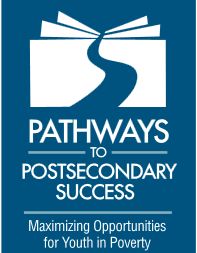
This blog focuses on my scholarship in my five research projects: learning assistance and equity programs, student peer study group programs, learning technologies, Universal Design for Learning, and history simulations. And occasional observations about life.
Postsecondary Educational Pathways of Low-Income Youth: An Analysis of Add Health Data

By Cynthia Feliciano and Mariam Ashtiani. This study used data from a recent longitudinal survey conducted over a 14-year period to compare the educational pathways of young adults from low-income backgrounds to their middle/high-income counterparts. Specifically, the study examined whether the effect of low-income status in adolescence on postsecondary pathways is better explained by early academic indicators and educational ambitions or higher education enrollment patterns and out-of school responsibilities. The analysis showed that low-income youth are disadvantaged in terms of entry into higher education as well as degree attainment. Roughly half of young adults from low-income families do not complete any postsecondary schooling, and those who do enroll are less likely to earn bachelor’s degrees, partly due to lower educational ambitions and lower academic achievement in adolescence. Post-high school experiences are most decisive, however: Nontraditional patterns of enrollment in two-year colleges, shaped by out-of-school responsibilities such as full-time labor force participation and family obligations, are a key mechanism through which lowincome status in adolescence leads to lower likelihood of degree completion in young adulthood.
Peer-Reviewed Research on Low-Income Students in Postsecondary Education: Trends and Future Directions

By Vicki Park and Tara Watford. The simultaneous impact of the Great Recession and a national focus on improving postsecondary access and persistence present both challenges and opportunities for the field of higher education. In this context, questions of how colleges and universities can better support low-income youth are increasingly at the forefront of research and educational reform agendas. The spotlight on higher education places researchers at an important crossroads—we need to assess not only what we know about low-income college students but also where our information gaps lie. Currently, we know that low-income students tend to enter and complete college in much smaller numbers than their middle- and high-income peers (Ashtiani & Feliciano, 2012; Oseguera, 2012) and only 11% of low-income students earn a postsecondary degree by the age of 26 (Institute for Higher Education Policy [IHEP], 2010). Historically underserved populations such as low-income Black, Latino and Native American students are less likely to earn degrees than their White and Asian/Pacific Islander peers (IHEP, 2011). Low-income students are also more likely to attend under-resourced, overburdened community colleges (Provasnik & Planty, 2008; Oseguera, 2012). But apart from these types of descriptive statistics, what research is being conducted on low-income college students? And specifically, how does the higher education field prioritize this research? In this brief, we examine several broad research trends that occur in five key peer-reviewed higher education journals over a 20-year period (1989–2008). In particular, we ask:
- How many articles were published that examine low-income youth in the context of postsecondary education?
- Were the data on low-income youth collected and analyzed via quantitative, qualitative or mixed-methods approaches?
- In what types of colleges and universities have low-income youth predominantly been studied?
Exploring these research trends allows us to better understand how the field has conceptualized the problems of college entry, persistence, and completion for low-income students. From this understanding, we can formulate research agendas= for the future that will be relevant and informative to initiatives aimed at improving college opportunities for low-income youth. More precisely, we can develop a deeper understanding of how higher education can promote equitable outcomes.
Universal Design for Learning (UDL) Video from YouTube
Active Learning Is Found to Foster Higher Pass Rates in STEM Courses
 <Click on the following web link to download the complete report> “Active Learning Increases Student Performance in Science, Engineering, and Mathematics”
<Click on the following web link to download the complete report> “Active Learning Increases Student Performance in Science, Engineering, and Mathematics”
Authors: Scott Freeman, Mary Wenderoth, Sarah Eddy, Miles McDonough, Nnadozie Okoroafor, Hannah Jordt, and Michelle Smith Organizations: The lead researchers are at the University of Washington. The paper was published in the Proceedings of the National Academy of Sciences.
Summary: The researchers conducted a meta-analysis of 225 studies of undergraduate education in science, technology, engineering, and mathematics, the STEM disciplines. The studies compared the failure rates of students whose STEM courses used some form of active-learning methods—like requiring students to participate in discussions and problem-solving activities while in class—with those of students whose courses were traditional lectures, in which they generally listened. The studies were conducted at two- and four-year institutions chiefly in the United States and previously appeared in STEM-education journals, databases, dissertations, and conference proceedings. To be included, the studies had to assure that the students in each kind of course were equally qualified and able, their instructors were largely similar, and the examinations they took either were alike or used questions from the same pool.
Results: A 12-point difference emerged. While 34 percent of students in the lecture courses failed, 22 percent of students failed in courses that used active-learning methods.
Bottom Line: Calls for more STEM graduates have long been stymied by attrition in those majors, and introductory courses have often proved to be a big obstacle. Different teaching methods may help remedy that pattern.
High School Coursework and Postsecondary Education Trajectories: Disparities between Youth Who Grow Up In and Out of Poverty
<Click on this link to download the complete report.>
By Leticia Oseguera. One of the most direct ways schools can positively affect students’ college going trajectories is to ensure access to a rigorous college preparatory curriculum (Adelman, 2006). Students who complete gateway mathematics courses like algebra and pre-calculus, for example, are more likely to succeed in four-year postsecondary institutions (Swail, Cabrera, Lee, & Williams, 2005). Similarly, some researchers have found that enrollment in advanced placement (AP) courses can increase students’ likelihood of eventually completing college (McCauley, 2007). Although students who satisfy a college preparatory curriculum while in high school do have a greater array of college choices available to them, access to this type of coursework is often stratified by socioeconomic status and race (McDonough, 1997; Walpole, 2007). It is essential that we develop a greater understanding of the effects of the high school curriculum on postsecondary outcomes for students from varied socioeconomic backgrounds so at these differences can be addressed. This brief draws on a study of a national cohort of students to explore how socioeconomic status (SES) and high school coursework intersect to influence
educational pathways. A deeper understanding of how academic course-taking in high school affects post-secondary education outcomes can help guide policy aimed at identifying and closing gaps in the college access pipeline. In particular, a more nuanced portrait of how these factors come into play for students in poverty and for their more affluent counterparts will allow for informed policy and research recommendations that can improve educational outcomes for all students. A National Study of Students’ Educational Pathways The data presented in this brief were drawn from the 2002–2006 panel of the Education Longitudinal Study (ELS), conducted by the National Center for Education Statistics (NCES). NCES surveyed 15,441 tenth graders at the end of the 2001–2002 academic year, and again in spring 2004 (when the students were asked to report their intended high school graduation status), and in spring 2006 (two years post-high school, assuming a traditional high school path).2 Data collection at these key points in time allowed us not only to compare students’ high school experiences, but also to better understand how those experiences relate to their options and choices after
high school.
Socioeconomic Inequalities in the Postseoneary Enrollment, Employment, and Civic Engagement of California Youth

By Veronica Terriquez and Sandra Florian. In a best case scenario, young adults who are transitioning out of high school face a choice among various postsecondary education and employment options. At the same time, they may have new opportunities to engage with and be a positive influence on their communities. But today’s youth are coming of age at a time of significant socioeconomic inequality that may shape their ability to access postsecondary education, obtain meaningful employment, and contribute to the world around them. This may in turn shape their current and future outcomes and well-being. In recent decades, parental income has played an increasingly important role in determining children’s educational attainment and other opportunities (Reardon, 2011). Meanwhile, parents with college degrees tend to be better informed about postsecondary educational options and have significantly more experience and resources to help their children attend college, secure good jobs, and participate in civic affairs (Lareau & Weininger, 2008; Verba, Schlozman, & Brady 1995). With these socioeconomic inequalities in mind, we draw on the 2011 California Young Adult Study (CYAS) to outline patterns of postsecondary school enrollment, employment, and civic engagement among California’s 18- to 26-year-olds. Importantly, we show how these patterns vary by the income and education levels in young adults’ families of origin. Together, the findings show the extent to which socioeconomic status continues to shape the work, education, and civic trajectories of a contemporary cohort of California’s young adult population and points to important policy implications to address these inequalities.
Addition by Subtraction: The Relation Between Dropout Rates and School-Level Academic Achievement
[Click on this link to read the entire article.]
Background/Context: Efforts to improve student achievement should increase graduation rates. However, work investigating the effects of student-level accountability has consistently demonstrated that increases in the standards for high school graduation are correlated with increases in dropout rates. The most favored explanation for this finding is that high-stakes testing policies that mandate grade repetition and high school exit exams may be the tipping point for students who are already struggling academically. These extra demands may, in fact, push students out of school.
Purpose/Objective/Focus: This article examines two hypotheses regarding the relation between school-level accountability and dropout rates. The first posits that improvements in school performance lead to improved success for everyone. If school-level accountability systems improve a school for all students, then the proportion of students performing at grade level increases, and the dropout rate decreases. The second hypothesis posits that schools facing pressure to improve their overall accountability score may pursue this increase at the cost of other student outcomes, including dropout rate.
Research Design: Our approach focuses on the dynamic relation between school-level academic achievement and dropout rates over time—that is, between one year’s achievement and the subsequent year’s dropout rate, and vice versa. This article employs longitudinal data of records on all students in North Carolina public schools over an 8-year period. Analyses employ fixed-effects models clustering schools and districts within years and controls each year for school size, percentage of students who were free/reduced-price lunch eligible, percentage of students who are ethnic minorities, and locale.
Findings/Results: This study finds partial evidence that improvements in school-level academic performance will lead to improvements (i.e., decreases) in school-level dropout rates. Schools with improved performance saw decreased dropout rates following these successes. However, we find more evidence of a negative side of the quest for improved academic performance. When dropout rates increase, the performance composites in subsequent years increase.
Conclusions/recommendations: Accountability systems need to remove any indirect benefit a school may receive from increasing its dropout rate. Schools should be held accountable for those who drop out of school. Given the personal and social costs of dropping out, accountability systems need to place more emphasis on dropout prevention. Such an emphasis could encompass increasing the dropout age and having the school’s performance composite include scores of zero on end-of-grade tests for those who leave school.
